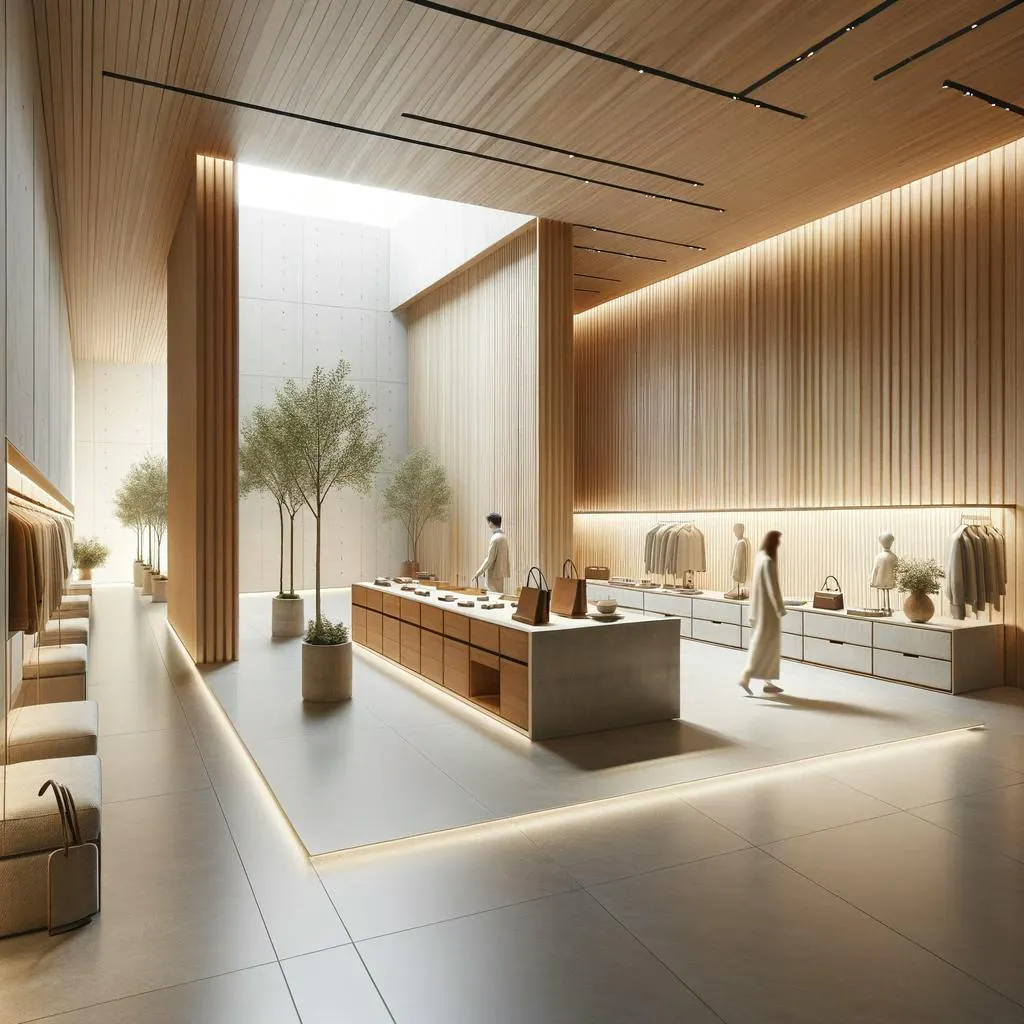
Why Is My Retail Foot Traffic Down?
Why is there less store traffic? Does foot traffic even matter in modern retail? Here’s everything you need to know about retail foot traffic trends today.
Foot traffic, store traffic, retail foot fall... whatever you want to call it, if you have a brick & mortar store, the amount of people coming in is typically the lifeblood of your brand. Yes, and maybe especially, even in the ecommerce era. After all, most retailers can’t afford loss-leading physical locations to only cater to online sales (we’re not all Amazon).
In fact, over 60% of shoppers still prefer to shop in physical locations – we’ll get into why a bit later – and the brands that stay committed to providing a stellar experience for their visitors typically win the soles of the target consumer, and ultimately improve their bottom line due to the omnichannel retail effect.
Let’s dive deeper into the state of retail foot traffic today, and how your brand can continually increase visits to your brick & mortar stores.
What is Foot Traffic in Retail?
In retail, foot traffic refers to the number of people entering and moving around within a retail environment, such as a store, shopping mall, or commercial district. It's a critical metric for retailers and marketers, providing valuable insights into customer behavior, store performance, and the overall health of a retail business. By analyzing foot traffic data, businesses can make informed decisions about store layout, product placement, staffing needs, and promotional strategies to optimize sales and improve customer experience.
Analyzing and understanding foot traffic goes beyond merely counting the number of customers entering a store. For more actionable insights, brands should know metrics like...
Customers Per Day
How many actual customers visit each day.
Movement Patterns
Activity within certain sections of a store.
Dwell Time
How long customers spend in a specific area.
Conversion Rate
How number of visitors translate into sales.
For more retail metrics to know, use our free guide.
These metrics help retailers identify high-traffic areas within a store, peak shopping hours, and even the effectiveness of window displays and in-store promotions. Luckily, with today’s suite of advanced analytics and technologies such as video surveillance, WiFi tracking, and smartphone location services, pulling actionable insights from foot traffic data has significantly improved.
For retailers with physical locations, optimizing foot traffic is essential for survival and growth. It allows brands to strategically tailor their marketing efforts, enhance customer engagement through clienteling, and create a shopping environment that encourages more frequent visits and longer stays. High foot traffic can indicate a store's popularity and healthy customer loyalty. Conversely, a decline in foot traffic may signal a need for operational adjustments or a reevaluation of the store's marketing strategies. In essence, monitoring and understanding foot traffic in retail is a foundational element for achieving business success in today's market.
Why is Foot Traffic Decreasing?
It’s not just you. Store traffic has been on somewhat of a decline in the last few years, despite a bounce-back after pandemic restrictions lifted. For many brands, foot traffic has yet to recover to pre-pandemic levels as year-over-year numbers for indoor shopping malls, department stores, and more have all seen a decline.
And recently, there is even more headwind for retail foot traffic as shoppers face everything from high inflation, a shaky economy, and even severe weather that keeps people huddled up at home (that’s right, more and more retailers are blaming the weather for lower sales).
Of course, there’s also the 800-pound virtual gorilla in the room: online shopping. While shoppers may prefer to shop in-store, they aren’t shying away from shopping online either, with ecommerce sales in the US hitting over a trillion dollars for the first time in 2022, and representing 22% of total retail sales in 2023, the largest percentage to date.
So ecommerce is just eating brick & mortar’s lunch, right? That’s why foot traffic is decreasing? Not so fast.
Out of 20,000 consumers polled by IBM, only 9% said they are satisfied with the in-store shopping experience.
According to a recent, massive study by IBM that surveyed 20,000 consumers, only 9% said they are satisfied with the in-store shopping experience. This means that customers aren’t going to physical locations just because ecommerce is better; it more so means that the in-store experience just isn’t very good. So the retailers who can deliver a great experience are winning a larger and larger share of the existing foot traffic.
How Do You Increase Foot Traffic in Retail?
The answer is clienteling.
Clienteling in retail is providing an elevated, personalized shopping experience that feels like the white-glove service that existed before ecommerce. Clienteling isn’t just good customer service. Rather, it goes beyond that by establishing an intimate relationship with each shopper – akin to how it feels to walk into that hair salon you’ve been frequenting for a decade. They know you: your name, your birthday, your favorite music, and of course how you like your hair done.
According to research by McKinsey, the vast majority of customers (80%) crave personalization from retailers. This is why when clienteling is done right, it helps to reduce customer acquisition costs, increase marketing efficiency, increase revenue for retail brands, and of course get more customers new and old to come into the store to shop.
For example, “experiential retail” is a modern trend for brands trying to increase their overall foot traffic. The term refers to making physical stores an experience rather than just a transactional location. This can include areas on the show floor designed for social media pictures, kiosks to virtually try on products, cafes, live music, even desserts. Experiential retail can only be experienced by going into a brick & mortar store, and 82% of brands surveyed believed that this sort of experiential value was crucial to have.
Providing this elevated experience is just one aspect of clienteling.

The Future of Clienteling is Already Here
 Download Now
Download NowClass is in Session: The Ultimate Guide to Retail Clienteling

Successful Clienteling Stories from Our Customers
More Best Practices to Boost Store Foot Traffic

Retail Strategy
Elevating Store Sales in the Era of the Omnichannel Customer
Explore essential strategies for opening and managing brick-and-mortar retail stores successfully using Endear CRM. Opening a store in the coolest neighborhood is step one. Equipping your team with a tool that drives foot traffic while measuring store performance is (a very close) step two.

Retail Strategy
How to Use SMS Marketing to Increase Foot Traffic at Your Stores
Learn how to turn your retail shoppers into repeat customers and score more business opportunities through SMS marketing.

Retail Strategy
How to Woo Gen Z Shoppers to Shop In-Store
Learn how to blend digital and real-world experiences for success in the new age of retail.

Boost Retail Foot Traffic with Endear
Endear’s CRM is built with clienteling in mind for retail brands. With better customer data capture, organization, and insights, Endear puts localized retail marketing on autopilot. Easily use target customers and personalize your messaging to motivate them to visit their local store location.
Endear Clienteling FAQs
- Automated Campaigns: Create personalized emails that automatically send based on specific customer details you set. For example, automatically send a thank you to a customer for making their first in-store purchase.
- Clienteling: Give sales associates the power to reach out one-on-one, enabling them to offer personalized shopping experiences and product recommendations and building longterm loyalty.
- Appointment Scheduling: Send stylist availability through email or text, and manage the in-store appointment booking within Endear.
- Performance Tracking: Monitor how well your campaigns are driving store foot traffic, helping you refine your approach over time.
How does Endear help increase foot traffic in retail stores?
How does Endear help increase foot traffic in retail stores?
Endear increases retail store foot traffic by leveraging our advanced customer relationship management (CRM) capabilities to deliver personalized shopping experiences. By organizing all your data sources, Endear enables store teams to send targeted, personalized messaging and promotions to customers, enticing them to visit their local store. This personalized approach helps in building a deeper connection with customers, motivating them to visit more frequently and stick around.
What specific features does Endear offer to attract customers to physical stores?
What specific features does Endear offer to attract customers to physical stores?
Endear has several features built in and designed to attract customers to physical stores, including:
How does Endear use data to improve foot traffic?
How does Endear use data to improve foot traffic?
Endear empowers teams with first-party customer data to gain insight into shopping behaviors, preferences, and patterns. This data can then inform more targeted retail marketing efforts, helping brands to reach out to customers with personalized communications that are more likely to resonate. By understanding what customers want and how they prefer to shop, brands can create tailored in-store experiences and offers that better attract shoppers.
Is Endear suitable for all types of retail stores?
Is Endear suitable for all types of retail stores?
Endear serves brands best when they own and operate a mix of physical stores, ecommerce, and even wholesale accounts. Whether you're selling apparel, accessories, home goods, or beauty, Endear’s clienteling and targeted retail marketing tools can be customized to meet your specific needs and customer base, helping to drive foot traffic and increase sales.
My company already has a loyalty program. Can Endear’s platform integrate with our existing retail marketing strategies?
My company already has a loyalty program. Can Endear’s platform integrate with our existing retail marketing strategies?
Yes, Endear seamlessly integrates with existing retail marketing strategies. It complements your current efforts by providing a more detailed understanding of your customers' behaviors and preferences. Endear’s platform can enhance email marketing, social media campaigns, and other promotions with 360 degree insights, ensuring your marketing strategies are more effective in driving foot traffic to your stores.






